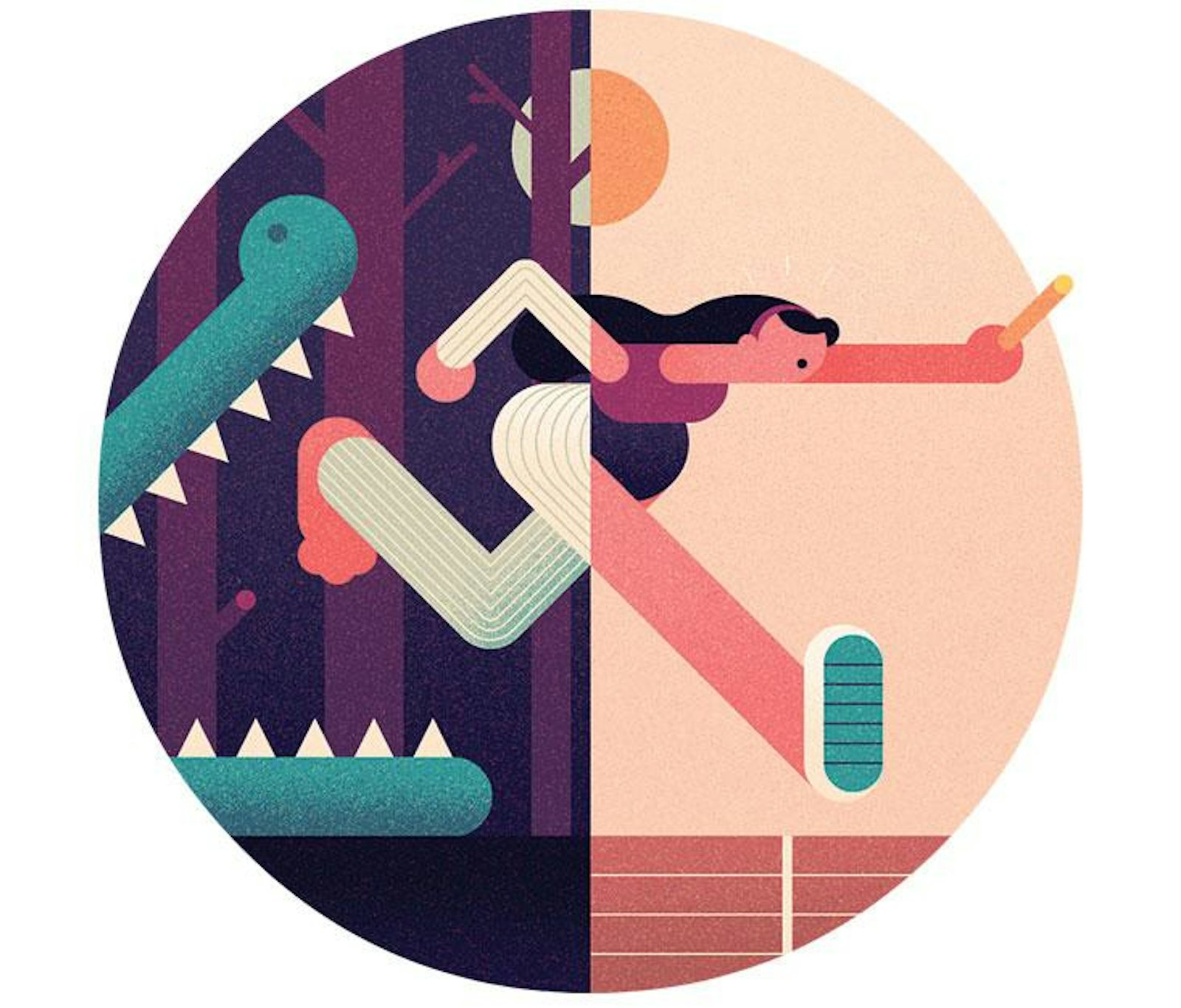Once, I dreamed I was at a man’s funeral. According to the deceased’s instructions, each of his toes were to be buried in tiny, individual coffins. When I woke up, I wondered, “What could it mean?”
According to some neuroscience research on dreams, like that of the Harvard psychiatrist Allan Hobson, the coffined toes might mean absolutely nothing. In his view, dreams are essentially narratives that our frontal brain areas piece together from chaotic brain signals originating from the brain stem. I might look back on that dream and derive some meaning from it after the fact, but it’s not like those coffined toes are my brain’s way of telling me something important.
Indeed, sometimes dreams seem so weird that they couldn’t possibly have meaning. But weird dreams are actually relatively rare. Eighty percent of dreams are pretty banal, says Atti Revonsuo, a cognitive neuroscientist at the University of Skövde, in Sweden. We just think weird ones are relatively common because we are more likely to remember and talk about the weird ones (this is the availability bias in action).
But not all dream researchers agree that dreams are meaningless. Revonsuo argues that the reason we dream is, primarily, to practice how to react to (mostly ancestral) threats such as escaping, fighting, and so on.
It turns out that mental practice has been shown in over 30 sports to be as helpful as physical practice. A now-classic study of mental exercise, for example, shows that golfers who visualized putting a ball into a hole performed 30 percent better than they did on a prior attempt. There’s something about exercising your motor system in an inner, idealized environment that makes you perform better. But if you get too much mental practice you start to get too disconnected from reality. So, according to Revonsuo, dreaming about being chased can help you when you really are being chased because, even if the dream’s scary, it’s a form of “positive imagery.”
Further evidence that dreams are a form of threat simulation: They have a tendency to feature negative emotions—fearful, angry, and anxious dreams are more common than happy ones. And the things we dream about tend to be biased in the direction of ancient dangers rather than more modern ones. We dream about being chased by animals and monsters more than having our credit card defrauded, even though most of us have very little real-life experience of being chased by animals (or monsters).

“The dream image is an emotionally guided construction or creation, not a replay of waking experience.”
This disconnect between our life experience and dream content suggests that the content is influenced by evolved factors. For Revonsuo, this means that the kinds of things that scared our ancestors in the Pleistocene are over-represented in dream content now.
So are dreams caused by noise from the brain stem or are they designed a kind of mental rehearsal? It could be that both of these theories could be right. Suppose that random information enters the brain, and our minds makes stories out of them in order to rehearse how to deal with threats. The mind would deal with the brain stem’s information like actors playing an improv game, taking random suggestions from the audience and building a story. Just because the inspiration might be random doesn’t mean that resulting story needs to be meaningless. I did improv on stage for over 15 years, and I know that you can make a scary or happy scene with any suggestions from the audience.
Most people think their dreams do have some kind of metaphorical meaning. But whether they are actually meaningful—representing something important about the psyche—is a difficult question to answer because we do not know how to scientifically show that one thing in a dream really represents another in waking life, says Dan J. Stein, author of Cognitive Science and the Unconscious. For example, suppose Pat is beaten up in a bar fight. The next night Pat dreams of being attacked by an alligator. Does the alligator represent the attacker from the night before? Currently we do not have any scientific investigation to shed light on this issue.
Some data, however, are suggestive. A 2008 study, by researchers at the Tufts University School of Medicine, looked at the 10 most recently reported dreams before the 9/11 attacks and compared them to the 10 most-reported dreams after the attacks, and found that the dreams post-9/11 tended to have more themes of attack, such as being pursued by monsters or wild animals. “The study did not find a change in specific dream content,” the authors say. “The main, and highly significant, change was an increase after 9/11 in the intensity or power of the central imagery of the dream”—being attacked. The results, the authors conclude, support the “idea that the dream image is an emotionally guided construction or creation, not a replay of waking experience.”
It could be that, at some point in the future, we will understand imagination well enough to show that the processes that generate dreams use metaphorical imagery (monsters, wild animals) in place of more realistic imagery (planes and skyscrapers).
For now, it seems dreams might, at the least, be the product of the brain’s effort to consolidate important memories. Memories like 9/11 may be broken up in order to extract important information, like freshly encoded and emotional memories, during sleep, and this important information is “preferentially activated and incorporated into dream content,” according to a paper in Frontiers in Psychology, published in March. As a result, by organizing these memory fragments, dreams could give rise to new links among memories and, the researchers say, “form a novel ‘story’ that we have not experienced before, even exhibit a scene that never happens in real life.”
Jim Davies is an associate professor at the Institute of Cognitive Science at Carleton University in Ottawa, and author of Riveted: The Science of Why Jokes Make Us Laugh, Movies Make Us Cry, and Religion Makes Us Feel One with the Universe.






























